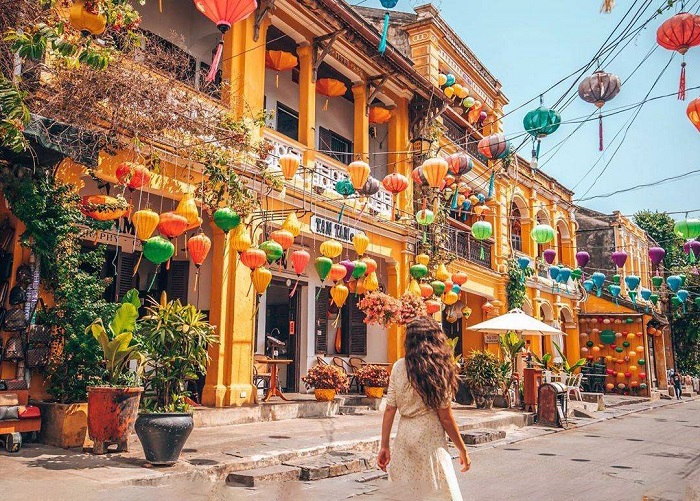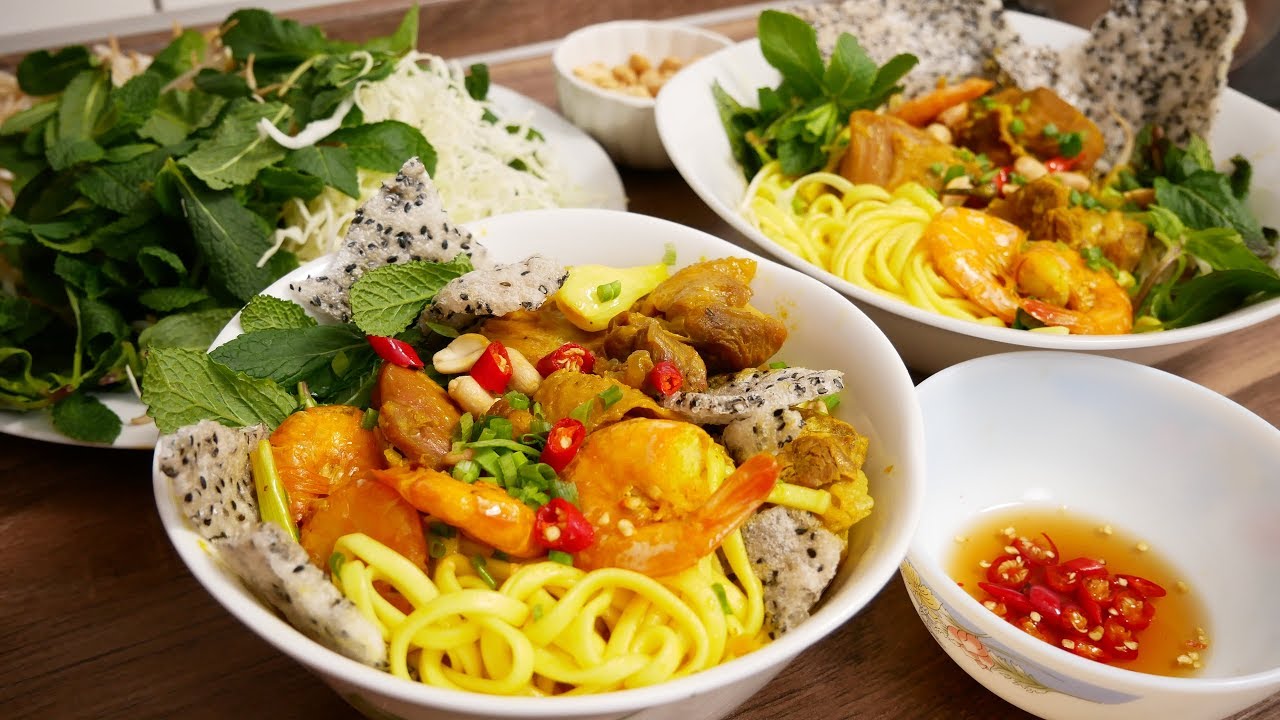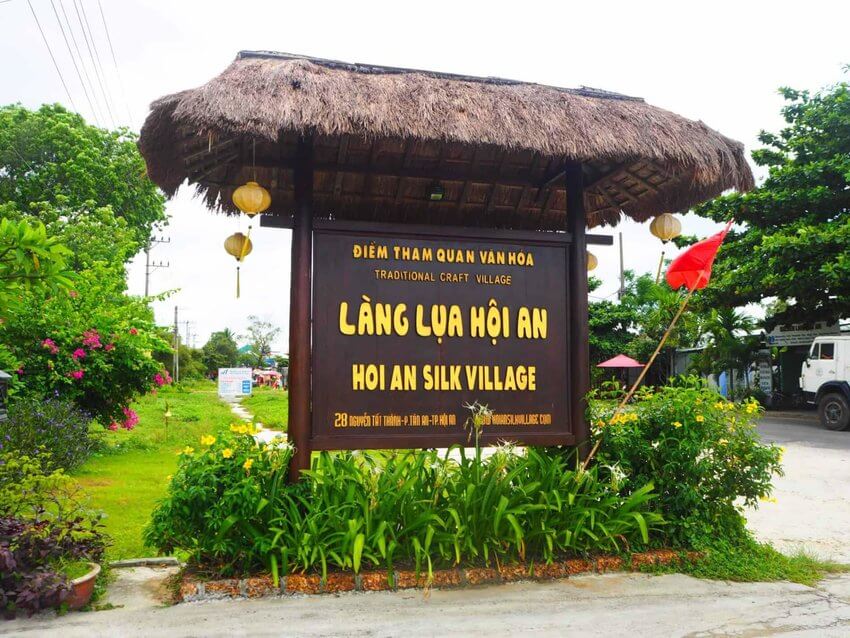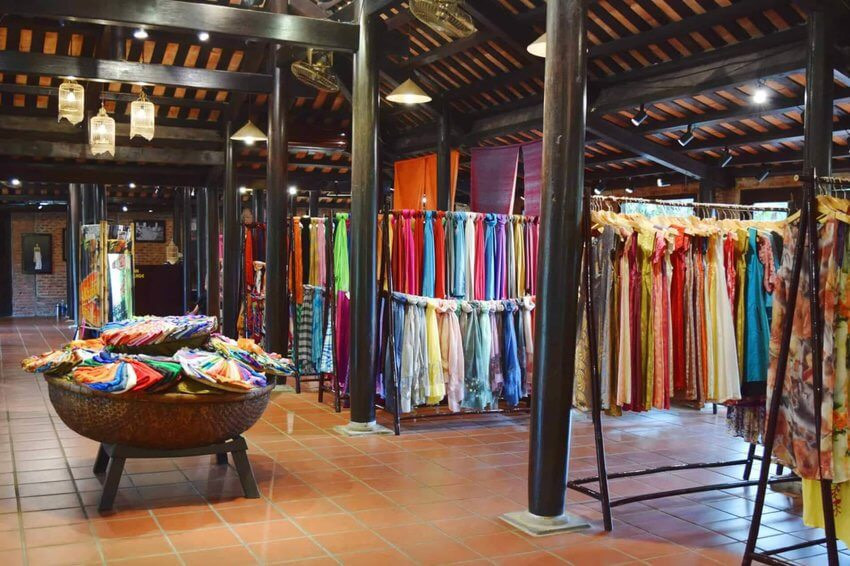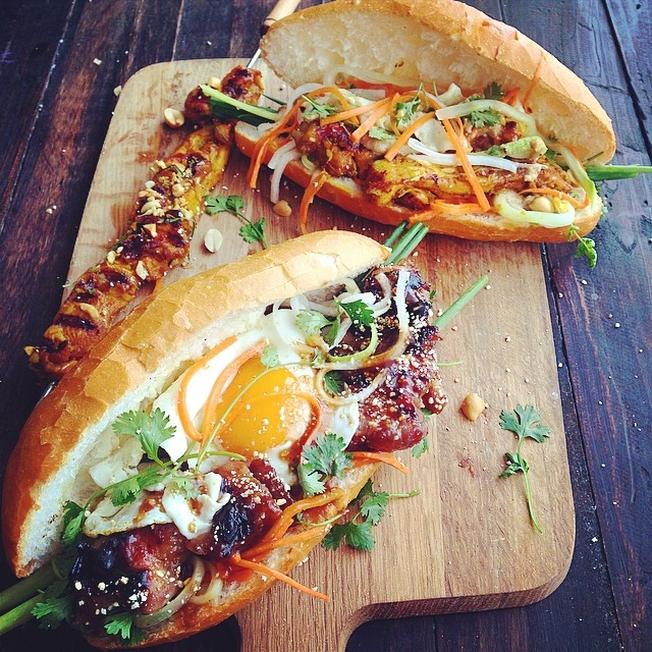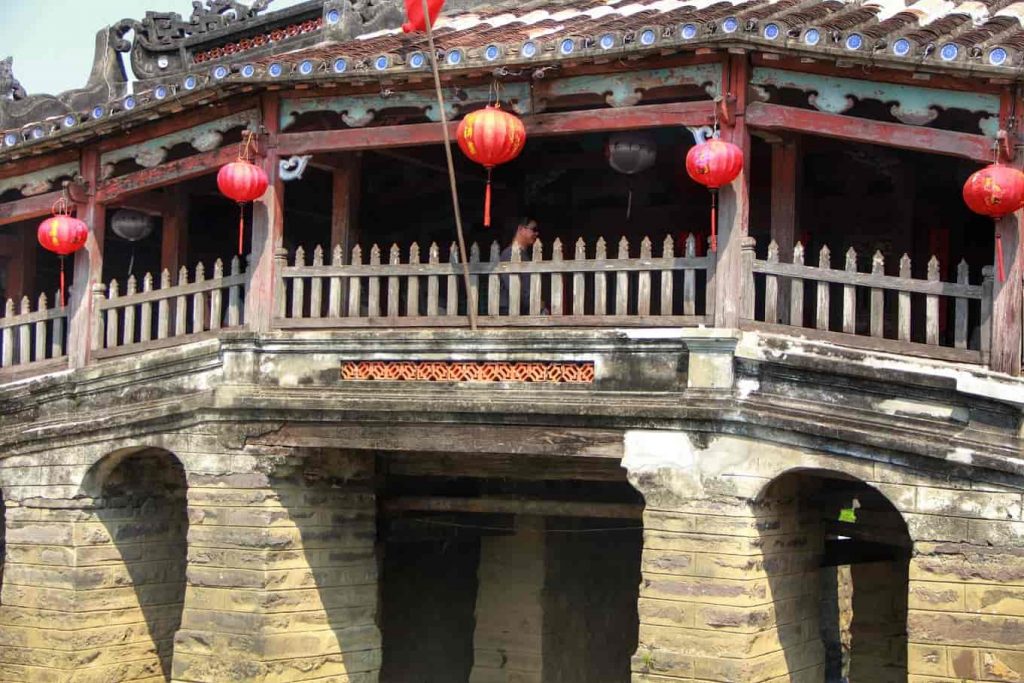Hoi An is a place that virtually everyone is familiar with, not just within the country but also among international friends. The ancient town of Hoi An leaves a lasting impression on visitors, not only because of its timeless beauty, but also for the romantic and gentle ambiance that few cities can match. Hoi An’s charm goes beyond its picturesque scenery; it’s enriched by the warm and friendly nature of the local people. The people of Hoi An are inherently hospitable, genuine, and welcoming, true to the nature of the Central Vietnamese people. Moreover, there are many captivating tourist spots that contribute to the beauty of Hoi An.
Join DanangPrivateCar.com as we explore the most exciting famous tourist attractions in Hoi An below. Let’s get started on this journey!
Hoi An – An Attractive Destination for International Tourists
Visiting Hoi An is like reliving the prosperous historical periods and learning more about the origins of ancient crafts that have survived from the past to the present. However, many of us may not know what makes Hoi An special or which intriguing places it offers.
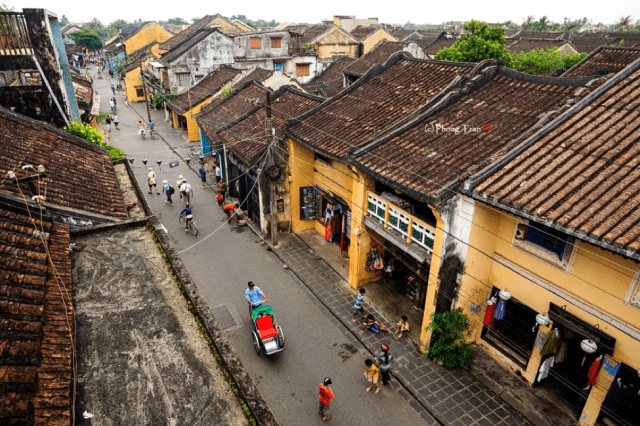
Perhaps, in each of our lives, there is a longing to visit Hoi An. And after that initial encounter, we keep returning to this place many times. Why? For what reason? For something that becomes clear only in our hearts. Many of us view Hoi An as a place to escape to. So, whenever there’s free time, we call out, “Hey, let’s go to Hoi An.” And just like that, the gang assembles, setting off on an impromptu adventure. Traveling to Hoi An doesn’t require a lot of money, and you might even return without spending a dime, aside from parking fees.

So, what makes Hoi An so fascinating? First and foremost, there’s the Japanese Covered Bridge, an iconic landmark that everyone knows. If you take a look at the 20,000 VND polymer banknote, you’ll see the image of the Japanese Covered Bridge printed on it. This is not just a sightseeing spot, a selfie spot, or a resting place; it’s more like a gateway because it leads to a series of other attractive destinations. Most of Hoi An’s tourist attractions are concentrated along the streets in the heart of the ancient town, so exploring on foot is truly enjoyable.
When touring Hoi An, you will definitely need to set aside a full day to explore these beautiful and famous tourist spots. DanangPrivateCar.com will provide specific details in the article below.
TOURIST ATTRACTIONS IN HOI AN’S ANCIENT TOWN
Japanese Covered Bridge
This ancient bridge has its origins dating back to the 17th century. It was built with contributions from Japanese traders and is therefore also known as the Japanese Bridge In Hoi An. The bridge features a unique architectural design, with a roof and decorations that showcase a harmonious blend of Japanese, Vietnamese, Chinese, and Western architectural styles. There’s a small temple located in the middle of the bridge called the Huyen Thien Dai De Temple. If you take a close look, you’ll notice the image of the Japanese Covered Bridge on your 20,000 VND polymer banknote.

- Address: Nguyen Thi Minh Khai Street, Minh An Ward, Hoi An.
Tan Ky Ancient House
This house has been in existence for nearly two centuries and boasts a unique architectural style constructed using traditional materials. The house is divided into multiple sections, each with its own purpose. The simple architecture of the house served the purpose of trading goods, with the front used for displaying merchandise and the back connected to the river for the import and export of goods. Despite undergoing renovation once, Tan Ky Ancient House still preserves its original architectural style. Here, visitors can admire the ancient charm of the house, with moss-covered walls and unique architecture that reflects the craftsmanship of local artisans from the past.
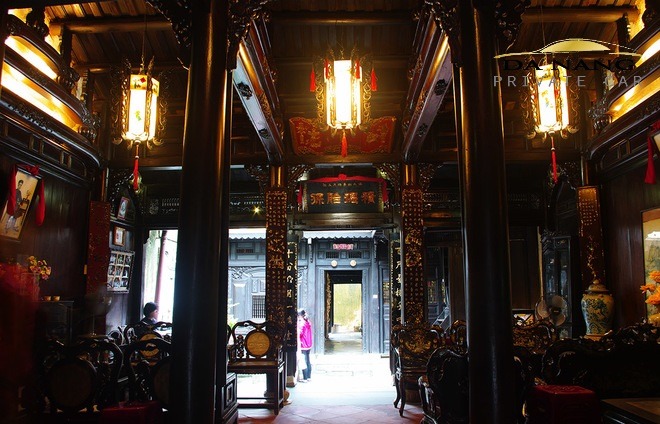
- Address: 101 Nguyen Thai Hoc Street, Minh An Ward, Hoi An.
Hoi An Museum of History and Culture
Just from the name, you might already have an idea of what’s inside, right? It’s a place where artifacts and exhibits showcase the different developmental stages of Hoi An’s history throughout the ages. This museum also retains the essence of ancient crafts like pottery, porcelain, woodwork, paper, and ironwork, each with its unique and exceptional features.

- Address: 10B Tran Hung Dao Street, Minh An Ward, Hoi An.
See more articles about: Top 6 Hoi An Museums – Evidences of History and Old Town Culture
Hoi An Handicraft Workshop
In the list of Hoi An tourist attractions I want to mention, this place is a must-visit. Inside the Hoi An handicraft workshop, you’ll find nearly all the famous traditional craft villages of Hoi An and Quang Nam, such as pottery, lantern making, fabric production, lacquerware, and more. When you visit, you’ll be impressed by the tranquil, countryside atmosphere. You can even try your hand at some production processes and purchase some unique handcrafted items to support the artisans.

- Address: 9 Nguyen Thai Hoc Street, Minh An Ward, Hoi An.
Phung Hung Ancient House
Phung Hung Ancient House is perhaps the most prominent ancient house in Hoi An’s Old Town. Despite having endured for over a century, it remains beautiful and full of charm to this day. The house features a unique architectural style that combines elements from Vietnam, China, and Japan, creating an elegant and remarkable appearance. It’s included in the list of National Heritage Sites, so you can imagine how beautiful and special it is. Visiting Hoi An without seeing this house might be a missed opportunity.

- Address: 4 Nguyen Thi Minh Khai, Minh An Ward, Hoi An.
Tran Family Chapel
This is considered the oldest house in Hoi An’s Old Town, with over two centuries of existence. The chapel is designed in a garden house style, even though it’s located in the Old Town, making it a fascinating attraction for visitors. The chapel also features architecture influenced by the three cultures of Vietnam, China, and Japan. Here, you can not only admire the chapel’s architecture but also see many valuable antiques left behind through the generations and carefully preserved inside.
- Address: 21 Le Loi Street, Minh An Ward, Hoi An.
Cantonese Assembly Hall
Constructed by the overseas Chinese community from Quang Dong in 1885, this assembly hall still maintains the ancient architecture of the old Chinese. Initially, it was built to worship Thien Hau Holy Mother and Confucius, but now it’s dedicated to worshiping Guan Yu and the Deified First Trung Sisters. Today, Cantonese Assembly Hall also serves as a community center for overseas Chinese, where they gather, meet, and assist each other in their business endeavors.
- Address: 176 Tran Phu Street, Minh An Ward, Hoi An.
Fukian Assembly Hall (Phuc Kien)
With over a century of history, this is a place of worship, meetings, and reunions for the Phuc Kien people. The assembly hall features intricate, unique architecture with meticulously crafted decorations. All the artifacts are meticulously carved. Fukian Assembly Hall (Phuc Kien) has been recognized as a national cultural historical relic since 1990.

- Address: 46 Tran Phu Street, Cam Chau Ward, Hoi An.
Chaozhou Assembly Hall
This place was originally built to worship General Ma Vien, a deity believed to control the winds and waves, helping ships sail smoothly. Chaozhou Assembly Hall is one of the three most famous assembly halls in Hoi An, becoming a fascinating Hoi An tourist destination due to its intricate details and beautiful porcelain sculptures.
Hoi An Market
As a bustling trading hub that has been in operation for centuries, Hoi An Market still retains its antique charm with unique architectural features. The dominant color is yellow. Here, you can experience the vibrant atmosphere of ancient trading and reminisce about Hoi An’s past as a busy port in the late 17th century. The market has become one of the most popular tourist attractions in Hoi An, where visitors can explore, shop, and enjoy local specialties at attractive prices.

- Address: 19 Tran Phu Street, Cam Chau Ward, Hoi An.
Hoi An Night Market
Located in the new An Hoi district, this is the place to shop for souvenirs dedicated to visitors of the Old Town. Hoi An Night Market is where you can choose your favorite souvenirs. Here, you’ll find a wide variety of street food and souvenirs. One of the distinctive products of Hoi An, the “Lantern,” is abundantly available here in various colors and sizes, and the prices are reasonable. If you’re unsure what to do in Hoi An at night, the night market is a great place to start.

- Address: Nguyen Hoang Street, Minh An Ward, Hoi An.
An Hoi Bridge
This is another spot you can’t miss when exploring the Old Town. Many tourists mistake it for the Japanese Covered Bridge, but it’s an entirely different bridge. As a distinctive point in the Old Town, An Hoi Bridge stretches across the Thu Bon River, bustling with boat traffic.

The bridge is made of intricately carved wood and decorated with numerous colorful lanterns. Due to its impressive design and the river’s boat traffic, it attracts thousands of visitors every day. If you’re an Instagram enthusiast or love taking photos, this is the perfect place to showcase yourself.
- Address: Bach Dang Street, Minh An Ward, Hoi An.
Hoai River Boat Cruise
When you visit the Old Town, you must experience this service! It allows you to experience the bustling trading scene of the old port. Sitting on the boat, you can admire the entire Old Town at night, sparkling and enchanting. The most lively time is during the full moon, where you can release lanterns and enjoy the stunning sight of the Hoai River lit up with lanterns. What more could you ask for?

TOURIST DESTINATIONS NEAR HOI AN’S ANCIENT TOWN
An Tuong Park Hoi An
Situated right near the ancient town, this is a large area with beautiful scenes for us to explore, take photos, and immerse ourselves in a virtual world. Within the park, there are cultural and artistic activities that recreate the Hoi An of the past.
Here, every evening (except Tuesdays), there is a show called “Memories of Hoi An,” which is the world’s largest overall art performance with a cast of 300 actors. The scenes, sound, and lighting are breathtaking, providing a high-quality artistic performance. If you visit Hoi An, you must experience this once to see how fascinating Hoi An can be.
- Address: 200 Nguyen Tri Phuong, Ward Cam Nam, Hoi An City.
Thanh Ha Pottery Village
Located about 2km from the ancient town of Hoi An, Thanh Ha Pottery Village is where the traditional pottery craft of the people of Hoi An is preserved and displayed. Here, you can see many ancient pottery items, some of which are centuries old. You can even witness artisans creating unique handmade pottery items through the traditional coiling technique. Additionally, you can try your hand at making your own pottery souvenirs for friends and family.

Hoi An Silk Village
This is another traditional craft village that has been preserved until today. Hoi An Silk Village offers a spacious and beautifully arranged area. Inside the silk village, you can view exquisite silk products woven with great care and featuring eye-catching designs. You can also tour houses for raising silkworms, traditional Cham weaving houses, machine silk weaving houses, and handmade silk-making workshops.
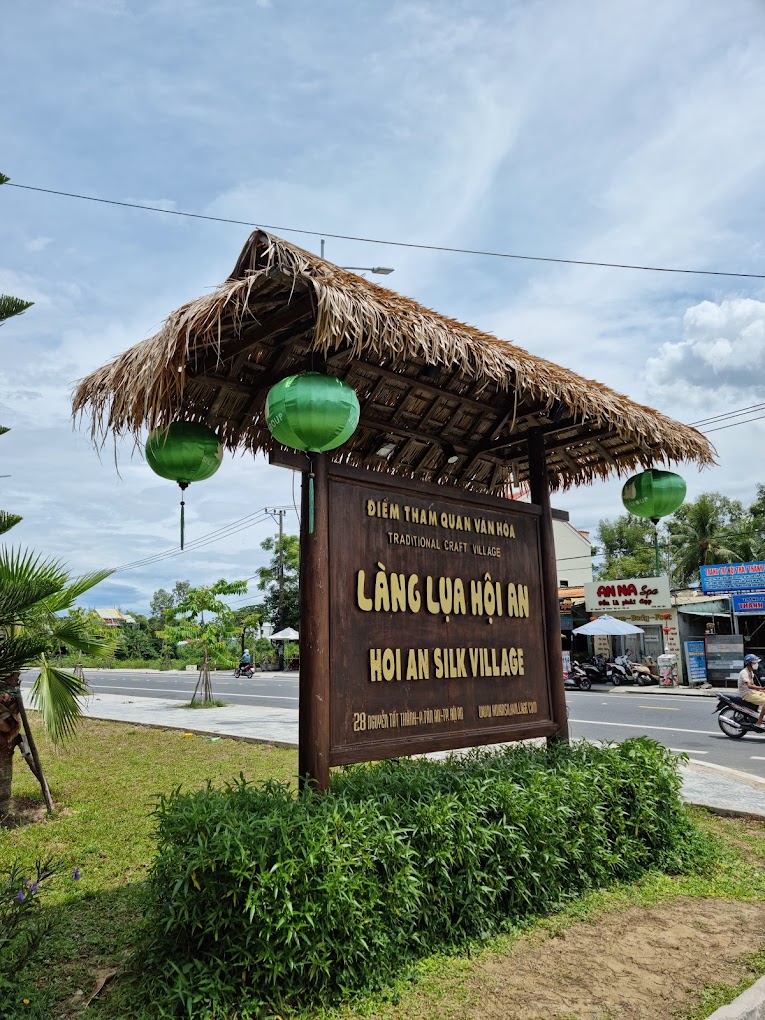
Here, you can witness the process of creating silk products from local weavers, and don’t forget to purchase some silk products as souvenirs for your loved ones.
- Address: 28 Nguyen Tat Thanh, Cam Pho Ward, Hoi An City.
Tra Que Vegetable Village
Tra Que Vegatable Village has been around for many years, but it has only become known to tourists in recent years. It’s a place for travelers who want to experience the real-life process of growing vegetables by the local people. You can immerse yourself as a “vegetable farmer of Tra Que,” experiencing how to water, plant, and care for vegetables.

You can also savor traditional dishes of Quang Nam Province and, of course, the specialty, Tra Que vegetables. You can even join cooking classes to prepare local dishes and enjoy what you’ve made with a glass of cherry blossom wine. The feeling is truly amazing.
- Address: Tra Que Village, Cam Ha Commune, Hoi An City.
Bay Mau Coconut Forest Tam Thanh
As a tourist destination in Hoi An not far from the ancient town, Bay Mau Tam Thanh Coconut Forest is a place dedicated to water enthusiasts. You don’t need to venture all the way to the Mekong Delta; this coconut forest offers lush coconut groves and a tranquil setting that promises to make you feel surrounded by the waters of the Mekong Delta in Vietnam.

Besides taking you on a tour through the coconut forest, local people here will also showcase their skills in making “coconut leaf bracelets” and performing “bamboo basket dances,” which are very artistic.
TOURIST DESTINATIONS OUTSIDE HOI AN’S ANCIENT TOWN
An Bang Beach
As the most beautiful beach in Hoi An, An Bang Beach welcomes thousands of visitors every day for sightseeing and swimming. The beach here is very flat, with clear blue water and a long stretch of golden sand, making it ideal for swimming. There are also many exciting water sports and activities, and the seafood options are diverse and affordable. You can enjoy seafood here without worrying about the price.

- Address: Cam An Ward, Hoi An City.
Cua Dai Beach
Located not far from Hoi An’s ancient town, Cua Dai Beach is also one of the most beautiful beaches in Hoi An. However, it’s less crowded than An Bang Beach. Visitors come here mainly to admire the seascape rather than for resorts since Cua Dai Beach experienced significant erosion a few years ago. Additionally, there are numerous eateries where you can enjoy affordable seafood.

- Address: Cam An Ward, Hoi An City.
Cua Dai Bridge
This is the most beautiful and majestic bridge in Quang Nam, connecting Hoi An City and Duy Xuyen District of Quang Nam. When you stand in the middle of the bridge and look down, you can see the beauty and grandeur of the bridge with the clean Thu Bon River flowing beneath. On both sides of the river are coconut groves, and people enjoy drinks in an elegant setting, while a few fishing boats dock in the distance. You must visit this place at least once.
- Address: Cam Thanh Commune, Hoi An City.
Cu Lao Cham Island
You’ve probably heard of Cu Lao Cham Island because it’s a famous island in Quang Nam. When you book a one-day Cu Lao Cham Tour, you can experience a variety of services, such as coral diving, swimming at Cu Lao Cham Beach, visiting the marine reserve, Tan Hiep Market, the ancient Cham well, Hai Tang Pagoda, and many other interesting spots. It’s an ideal destination for exploration and learning.

- Address: Tan Hiep Commune, Hoi An City.
Vinpearl Nam Hoi An Amusement Park
This is a high-end complex with restaurants, a water park, an amusement park, entertainment, and upscale accommodations. It’s newly opened but very large and influential. The central theme of the complex is Hoi An’s ancient town, so you can experience a smaller version of Hoi An’s old town when you visit Vinpearl Nam Hoi An. It’s a perfect place for those who enjoy virtual living. The highlight of Vinpearl Nam Hoi An is the water music show at 7:30 PM every evening.
HOI AN TOURIST SPOTS – FAMOUS CHECK-IN LOCATIONS
Hoi An Old Brick Kiln
After exploring all the tourist spots within the ancient town of Hoi An, many young people get excited when they hear about a relatively new and trendy location, the old brick kiln. This abandoned old brick kiln, situated in the middle of a field, has been refurbished and transformed into a popular spot for young people to take photos. There’s also a very stylish cafe nearby.

- Address: Duy Vinh Commune, Duy Xuyen, Quang Nam.
Ba Mu Tam Quan Pagoda
In recent times, the Ba Mu Tam Quan Pagoda has become a popular spot for young people to take Instagram-worthy photos. Despite most parts of the pagoda being destroyed, the entrance gate remains almost intact. The unique architecture and a blend of ancient colors, predominantly red, make this place the most favored check-in spot.

The Paper Flower Streets
A distinctive beauty of Hoi An, the paper flower streets are not a year-round tourist spot you can visit anytime because they appear seasonally. During the blooming season, every cluster of paper flowers with their vibrant colors turns the already serene streets of the ancient town into a more romantic and picturesque setting. It’s a must-see for travelers to Hoi An.
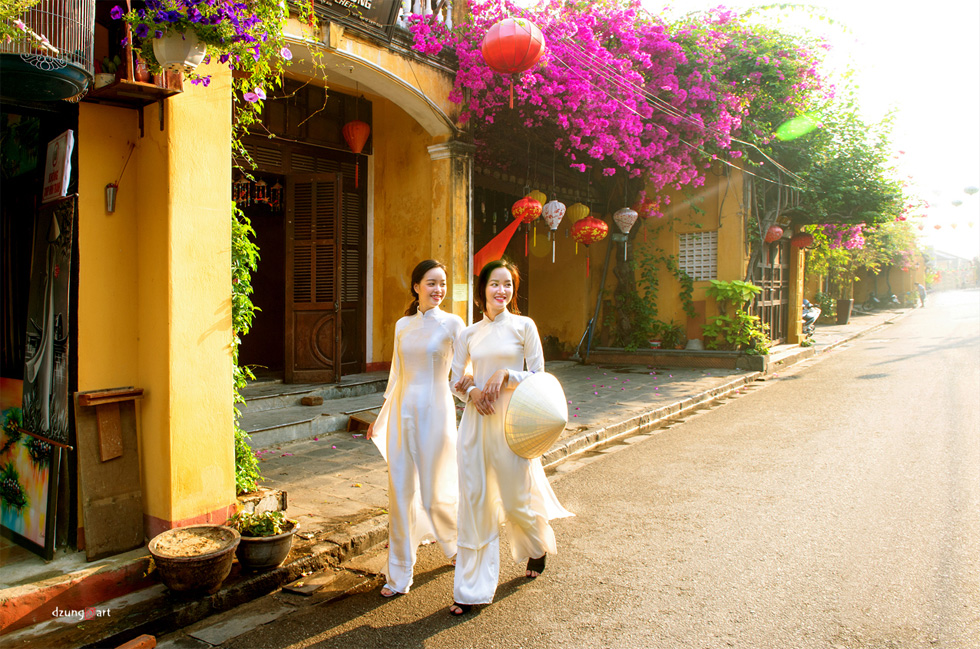
Hoang Van Thu Moss Wall
For nearly 10 years, the Hoang Van Thu Moss Wall has been a timeless inspiration for photographers and young people. In contrast to the vibrant yellow walls in Hoi An, the Hoang Van Thu Moss Wall is unforgettable due to its old and overgrown green moss.

Upon a casual glance, it may resemble an oil painting by an artist, formed by the sun’s rays and the moss. Although the wall has been mostly painted white, the photos taken here will undoubtedly be a beautiful memory for you.
Impressive Hoi An Cafes
Hoi An attracts many people not only for its peaceful and ancient town but also for the continuous emergence of cafes with impressive decorations. After strolling through the ancient town and feeling tired, visitors often seek out a small corner in these cafes to enjoy their favorite coffee or beverage. In that nostalgic ambiance, Hoi An suddenly becomes even more peaceful and ancient.

Read more articles about: Top Hoi An Coffee Shops with Beautiful Views.
Le Nghia Basketball Court
While many tourists are familiar with names like the Japanese Covered Bridge, the Hoai River, or the lantern-lit streets, Le Nghia Basketball Court is relatively new. Although not a very famous Hoi An tourist spot, it promises to be a unique check-in and virtual life experience for young people.

Tam Thanh Mural Village
Even though it’s quite far from Hoi An, many young people don’t mind the long journey to visit Tam Thanh Mural Village. Like something out of a fairy tale, Tam Thanh has transformed from a simple seaside village into a vibrant and colorful destination. Renowned artists from all over have turned this village into a lively and fresh place.

WHAT TO EAT AT HOI AN TOURIST DESTINATIONS – RECOMMENDED DELICACIES
To visit all the famous tourist spots in Hoi An, you might need more than just one day. To satisfy your hunger while exploring the ancient town and learn more about its culinary delights, rest assured that the list of delicious Hoi An dishes won’t disappoint you.
Hoi An cuisine is mainly divided into three categories: main dishes, snacks, and desserts. Here, I’ll mention a few dishes that you shouldn’t miss, even if you don’t have time to try them all:
- Main dishes: Mi Quang, Cao Lau, Com Ga (chicken rice), Banh Xeo (savory pancakes), and Banh My (Vietnamese sandwiches).
- Snacks: Banh Dap Hen Xao (clams with rice crackers), grilled meat, oc hut (sucking snails), banh beo (steamed rice cakes), kem ong (bee ice cream), nuoc mot (mot fruit juice), tau pho (tofu in tomato sauce), banh bot loc (clear shrimp and pork dumplings), and more.
- Desserts: Che Thap Cam (mixed sweet soup), Xi Ma Phu (black sesame soup), and Che Xoa Xoa (a sweet soup with various ingredients).
Although the cuisine in Hoi An is diverse, most dishes have a rustic and homely style, and there’s hardly any extravagant or fancy cuisine. This unique charm is what attracts many visitors. Simple yet delicious and budget-friendly food makes the journey even more enjoyable.
TIPS FOR CHECKING IN AT HOI AN TOURIST DESTINATIONS
When is the best time to visit Hoi An tourist spots?
Hoi An experiences two main seasons in a year, one being the rainy season and the other the dry season. Since the focus of a trip to Hoi An mainly involves sightseeing and dining, and there is limited beach activity, you can visit Hoi An at almost any time, as long as the weather is clear and pleasant. The ideal time, in my opinion, is during January, February, and August, September. During these months, the weather is relatively mild, making outdoor activities more enjoyable.
What is the most convenient mode of transportation to get to Hoi An?
The choice of transportation when visiting Hoi An depends on your point of departure, personal preferences, and your budget. Here are some common means of getting to Hoi An:
- By plane: If you are coming from a distant location or major cities in Vietnam, you can fly to Da Nang International Airport, and then use taxi or bus services to reach Hoi An, which is about 30 km away. You can also book a private car from Danang Airport to Hoi An with DanangPrivateCar.com.
- By car: If you are near Hoi An or wish to explore various places in the vicinity, renting a car with a driver in Hoi An is a good option. There are several car rental companies in Hoi An, and DanangPrivateCar.com is proud to be a leading transportation service provider in Hoi An, with a team of professional, local drivers ensuring a safe and comfortable journey.
- By motorbike: Renting a motorbike is a popular and cost-effective way to explore Hoi An and its surrounding areas. This allows you to easily move around the region and discover nearby villages and beaches.
- By bus: Hoi An has bus routes connecting to major cities in Vietnam. You can check schedules and book tickets at bus terminals or transportation centers.
- By bicycle: Hoi An is an excellent place for cycling, with many small roads and beautiful scenery. Many hotels and homestays offer free or very affordable bicycle rental services.
Your choice of transportation depends on your needs, preferences, and the geographical location you are traveling from to reach Hoi An. Consider all these factors when selecting the most suitable means of transportation for your travel plans.
What should you prepare when checking in at famous spots in Hoi An?
In my opinion, the best way to experience Hoi An is by riding a motorbike. Just hop on and go – if you get hungry, stop and eat at one of the local spots. You don’t need to carry much with you. However, for a more thorough preparation, make sure you have your documents (for renting a motorbike), sunscreen, and a comfortable pair of walking shoes.
In my article on “Traveling Tips for Hoi An,” I’ve compiled all the necessary information for you. It includes details that I find useful, whether you’re traveling independently or on a tour. I suggest referring to it as it contains valuable information, insights from my personal experiences, and tips to make your trip enjoyable.
THINGS TO DO AND AVOID WHEN VISITING TOURIST PLACES IN HOI AN
After several visits to Hoi An, I have gained some experiences that I believe would be helpful for anyone.
Things to do when visiting tourist places in Hoi An
Buy tickets to visit the ancient town: While not mandatory, I think it’s a good idea to buy tickets to visit historical sites like the Japanese Covered Bridge, ancient houses, and museums. The ticket fees are used for restoration and maintenance, so purchasing a ticket contributes to the preservation of these historical sites.
Visit Hoi An in the afternoon: Most people will recommend visiting Hoi An at night, claiming it’s the most beautiful time to explore the town. However, nighttime is only one facet of Hoi An. In my opinion, if you don’t have the whole day to spend, you should come in the afternoon, enjoy the evening, and then leave. The transition between day and night in Hoi An is enchanting, with lanterns lighting up as the sun sets.
Try playing a round of bai choi: Bai choi is a traditional folk game in Hoi An, very interesting, and it’s a unique feature of the ancient town, much like Ca Hue on the Perfume River. Combining traditional tunes with the refined pastime of the Quang people, it seems like everyone is eager to try their luck with a few cards.
Things to avoid when visiting tourist places in Hoi An
I have introduced some of the tourist attractions in Hoi An that I know for you. If you know of other beautiful places, please add them to my article. Here, I’m only sharing based on my personal experience and understanding, so there may be places I haven’t visited yet. DanangPrivateCar.com’s is also a place where readers and young travelers who love to travel come to connect and exchange ideas.
- Visiting Hoi An during the rainy season: This is something you should remember because very few people visit Hoi An during the rainy season, especially during floods. At that time, the entire ancient town is submerged in water, businesses are closed, and Hoi An takes on a serene and unusual atmosphere.
- Riding a motorbike in the pedestrian zone: Hoi An has regulations prohibiting motorbikes from entering the ancient town during specific hours to provide visitors with a pedestrian-friendly environment. So, if you’ve never been to Hoi An before, you should know the hours when motorbikes are not allowed in the Hoi An ancient town so you can plan accordingly.
- Wearing revealing clothing when visiting sacred places: Hoi An has many sacred sites, such as places of worship, temples, and assembly halls, so you should pay attention to your attire.
- Pushing and shoving: This is considered uncivilized and impolite behavior and is not seen in Hoi An. Hoi An is a destination for many international tourists, so both the local people and tourists have a habit of queuing up politely.
Based on the article, Danang Private Car’s has compiled a list of the most beautiful tourist destinations in Hoi An that you shouldn’t miss. So, what are you waiting for? Start planning your trip to Hoi An with your friends or family.









